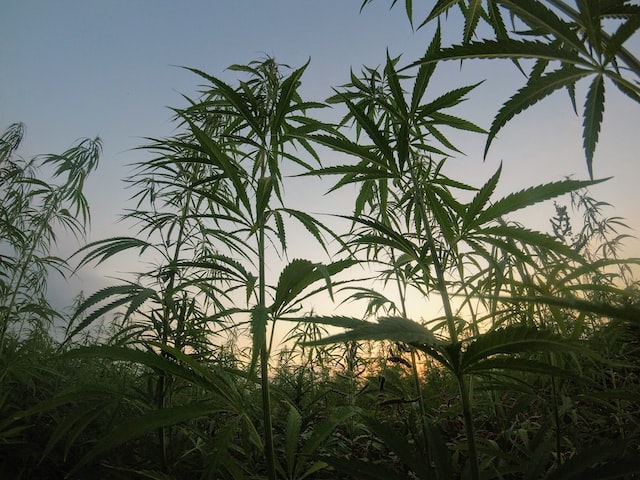Plant Day Sale | FREE CBD Pens on Orders above $100
Plant Day Sale | FREE CBD Pens on Orders above $100

In the world of cannabis, we always hear about two key components: THC and CBD. Although some may know these to be the two most abundant cannabinoids, not much else is known about the others – or that more exist in cannabis that is equally promising to our wellbeing. In fact, the hemp plant alone contains over 113 cannabinoids that each interacts with our systems uniquely. With every compound having a different effect, trying to research and identify those that are relevant to you can seem especially taxing.
We’re here to tell you that finding the right cannabinoid for you isn’t as hard as you may think. To help you simplify your wellness journey, we’ve summed up the most relevant out of the 113 based on their properties and the science behind them.
If THC and CBD are old news to you, then you may have heard of some new CBG products trickling into the wellness market. This compound is known as the “mother of all cannabinoids,” as all other cannabinoids stem from its CBGA precursor. CBG is a non-intoxicating cannabinoid that binds the same CB1 and CB2 receptors as THC – meaning that CBG won’t get you ‘high’ and it will also help reduce the ‘high’ caused by THC. Others have found isolated CBG to be effective against chronic pain, anxiety, insomnia, and more by directly interacting with our endocannabinoid system (ECS) for overall balance.
Though once thought to be responsible for the ‘high’ from cannabis, CBN is a non-intoxicating cannabinoid that is only produced when THC degrades via oxygen and sunlight. Now that we know that THC takes credit for mind-altering effects, we’ve also learned that we can thank CBN for helping reduce chronic pain, insomnia, and muscle spasms. Being a minor cannabinoid, much more research is needed to uncover the mechanisms of CBN. However, ongoing studies show promising synergistic interactions CBN may have with other cannabinoids found in hemp to elevate our day-to-day well-being.
Behind CBD and THC, CBC is the third most prominent cannabinoid found in cannabis plants. Despite its noteworthy presence, this cannabinoid remains obscure and an unexplored compound for many. With growing research, CBC is slowly being brought into the mix with its potent therapeutic effects on cannabinoid receptors – especially those linked to pain perception. This cannabinoid is non-psychoactive and carries anti-inflammatory and anti-depressant properties that could be up to 10 times stronger than CBD for stress and anxiety. Moreover, Its efficacy in concerns of inflammation, bone health, and bacteria growth cements the promise of this cannabinoid.
Like its name, this cannabinoid is structurally very similar to CBD with some key differences in its benefits. Preliminary research suggests that CBDV may be more effective for severe neurological and muscular disorders. This is because this cannabinoid has a much stronger effect on our ion channels than other cannabinoids. Our ion channels are vital for the electrical signaling of our nervous system
and the excitation of our muscle cells to contract when we need them to. Due to CBDV’s influence on these channels, it is said to be the primary cannabinoid for treating conditions such as epilepsy, autism spectrum disorder, muscular dystrophy, as well as many others.
As you may have suspected, the unmistakable odor and flavor profiles of cannabis can be attributable to terpenes: fragrant oils located in the trichomes of hemp plants. As we learn more about terpenes, the spotlight shifts from common cannabinoids like CBD to these aromatic compounds and their medicinal role in full-spectrum products. Hopeful studies have linked terpenes from hemp to have antiviral, anticancer, antidepressant, and pain-relieving properties. Although terpene research is still in its infancy, we know that combining terpenes with cannabinoids can provide enhanced, synergistic benefits compared to cannabinoids taken alone – known as the Entourage Effect.
On top of hemp’s 113 cannabinoids and 100+ terpenes, there also exist hundreds of other various botanical compounds that each have their own distinct effects on the body. When taken simultaneously, these molecules all interact with each other and their environment in harmony – resulting in a whole-plant boost of benefits that aren’t achieved when consumed individually. Researchers have found that full-spectrum products are in fact 4 times more potent than CBD isolates, meaning that lower doses could provide similar, if not better results than CBD alone. When it comes to achieving the Entourage Effect, we can think ‘the more the merrier,’ where full-spectrum products with more variety of cannabinoids and terpenes deliver the best benefits.
With CBD and THC becoming more saturated in today’s world, we slowly start to turn to other small but mighty molecules the hemp plant has to offer. As these cannabinoids are only found in very little amounts, affordable and isolated versions of these compounds are hard to come across.
Until our technology allows a better yield of these cannabinoids individually, we can still access them through the numerous full-spectrum CBD products on the market. The Entourage System arising from these products can even help provide a more amplified and budget-friendly experience than each compound on its own.
